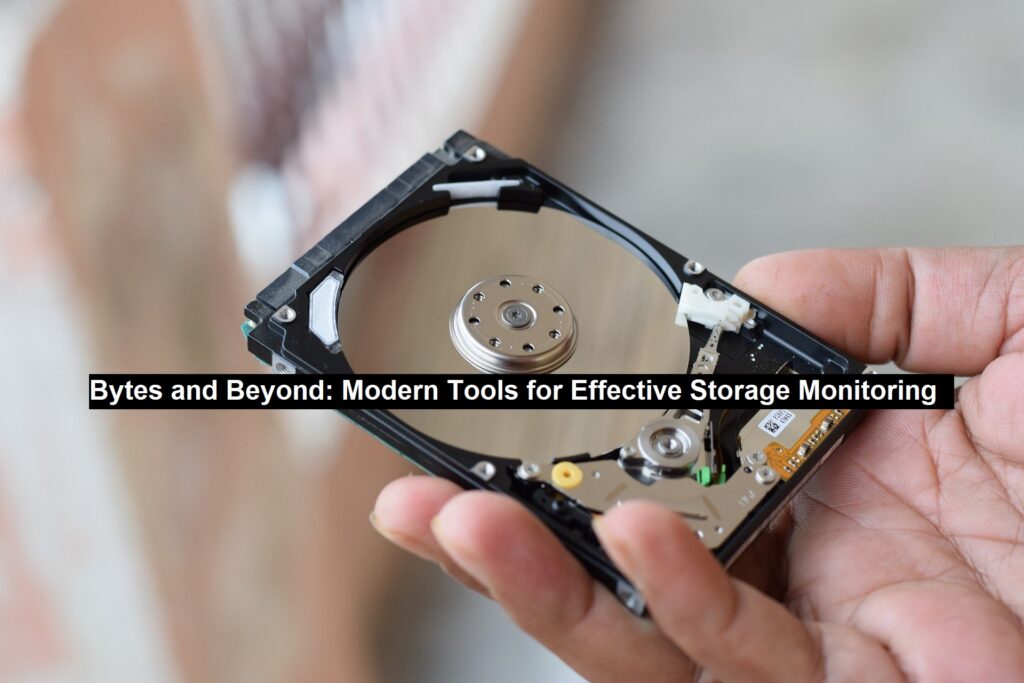
Bytes and Beyond: Modern Tools for Effective Storage Monitoring
In today’s data-driven world, organizations face the challenge of managing vast amounts of digital information. Ensuring the availability, integrity, and performance of storage infrastructure is critical to business continuity and efficiency. This is where Storage Monitoring tools come into play, offering real-time insights and proactive solutions to prevent system failures, optimize performance, and manage capacity effectively.
The Importance of Storage Monitoring
Storage monitoring is essential for businesses of all sizes, as it helps prevent data loss, reduce downtime, and enhance system performance. Without proper monitoring, organizations risk facing:
- Unexpected System Failures – Undetected issues can lead to data corruption or loss.
- Performance Bottlenecks – Slow storage responses can affect overall IT operations.
- Capacity Overflows – Without adequate monitoring, storage can quickly run out, disrupting workflows.
- Security Vulnerabilities – Monitoring helps detect unauthorized access and potential threats.
Modern storage monitoring tools address these challenges by providing real-time analytics, alerts, and automated responses to ensure seamless data storage operations.
Read: The Basics and Benefits of Network Security
Key Features of Modern Storage Monitoring Tools
Advanced storage monitoring solutions come equipped with several essential features that improve efficiency and performance. Some of the most notable include:
1. Real-Time Monitoring & Alerts
Real-time tracking of storage health ensures that IT teams can detect and resolve issues before they escalate. Many tools send automated alerts when a problem arises, such as excessive latency, overheating drives, or nearing storage limits.
2. Predictive Analytics & AI-Driven Insights
AI-powered storage monitoring solutions leverage predictive analytics to forecast potential failures. By analyzing past trends, these tools can recommend actions to prevent data loss or performance issues before they occur.
3. Capacity Planning & Optimization
Monitoring tools provide insights into storage consumption patterns, helping organizations plan for future capacity needs. They identify underutilized resources and suggest optimizations to avoid unnecessary expenditures.
4. Multi-Platform Integration
Modern storage infrastructures often include a mix of cloud, on-premise, and hybrid storage solutions. Effective storage monitoring tools integrate seamlessly across multiple platforms, providing a unified view of all storage resources.
5. Automated Remediation & Self-Healing Capabilities
Some advanced solutions offer self-healing mechanisms that automatically resolve minor storage issues without human intervention. This reduces downtime and ensures system reliability.
6. Security & Compliance Monitoring
With cyber threats on the rise, security monitoring is a crucial feature of storage monitoring tools. They can detect unauthorized access attempts, flag suspicious activities, and ensure compliance with industry regulations such as GDPR and HIPAA.
Leading Storage Monitoring Tools
There are several high-performing storage monitoring tools available today that help organizations maintain optimal storage performance. Some of the most widely used include:
1. SolarWinds Storage Resource Monitor
SolarWinds provides deep visibility into storage performance, capacity, and health. It offers comprehensive reports and real-time alerts, making it a popular choice among IT professionals.
2. NetApp Active IQ
NetApp’s AI-driven analytics platform proactively monitors storage environments, providing predictive insights and security recommendations to enhance efficiency and performance.
3. Nagios
Nagios is a robust, open-source monitoring tool that offers extensive storage tracking capabilities. It supports custom configurations and integrates well with various IT infrastructures.
4. Datadog
Datadog provides cloud-based storage monitoring with real-time dashboards, anomaly detection, and seamless integration with cloud services like AWS, Azure, and Google Cloud.
5. ManageEngine OpManager
Op Manager offers end-to-end network and storage monitoring, with powerful automation features to minimize manual intervention and optimize storage operations.
Best Practices for Effective Storage Monitoring
To maximize the benefits of storage monitoring tools, organizations should follow best practices, including:
1. Define Storage Performance Metrics
Set clear KPIs such as latency, IOPS (input/output operations per second), and throughput to measure storage performance effectively.
2. Implement Proactive Alerts & Notifications
Configure automated alerts for critical storage thresholds to ensure rapid response to potential issues.
3. Regularly Review and Optimize Storage Usage
Analyze storage consumption trends and reallocate underutilized resources to enhance efficiency and reduce costs.
4. Ensure Scalability & Future-Proofing
Choose storage monitoring solutions that can scale with business growth, supporting new technologies and expanding storage needs.
5. Maintain Compliance & Security Standards
Regularly audit storage environments to ensure compliance with industry regulations and implement robust security protocols to safeguard data.
The Future of Storage Monitoring
As data storage demands continue to grow, storage monitoring tools will evolve with advanced AI capabilities, automation, and enhanced security measures. Future innovations may include:
- AI-Driven Predictive Maintenance – AI will play an even bigger role in anticipating and preventing storage failures.
- Edge Storage Monitoring – With the rise of IoT and edge computing, monitoring tools will extend beyond data centers to edge storage locations.
- Blockchain for Storage Security – Blockchain technology may be integrated into storage monitoring to enhance data integrity and security.
Conclusion
Effective Storage Monitoring is critical for businesses to ensure data availability, optimize performance, and prevent disruptions. With modern tools offering real-time analytics, predictive insights, and automated responses, organizations can enhance their storage infrastructure and maintain operational efficiency. By implementing the right monitoring solutions and best practices, businesses can stay ahead in the ever-evolving digital landscape.